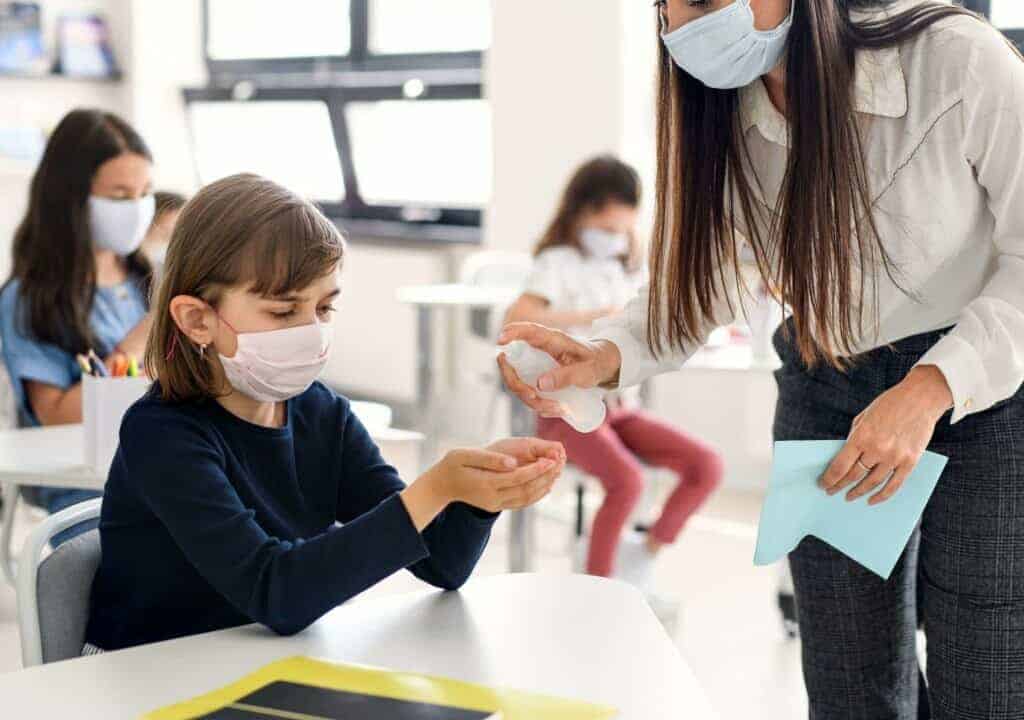Educational institutions serve as more than mere venues for academic learning; they are also crucibles where children hone social skills and learn to coexist. However, these environments can become breeding grounds for various illnesses, including colds, pharyngitis, and asthma. Consequently, implementing preventative measures to ensure a healthy setting for students is imperative.
Education and Health: Effective Measures to Prevent Diseases in Schools
Before a child’s initiation into formal education, conducting a comprehensive medical evaluation is paramount. This assessment should include:
- Thorough Physical Examination: Particularly crucial for children with chronic conditions such as diabetes, heart diseases, bronchial asthma, epilepsy, etc., to ensure optimal treatment that facilitates regular and safe school attendance.
- Sensory Evaluation: Early detection of vision and hearing issues is vital, as they can significantly impact learning.
- Emotional Support: Transitioning from a home to a school environment can be challenging. Providing emotional support to ease this adjustment is important.
Considerations for Primary Education
As children grow, their needs evolve. During primary education, it is important to:
- Continue Physical Examinations: Monitoring ongoing development and overall health is essential.
- Ongoing Sensory Assessments: Regular hearing and vision tests are necessary to identify any changes that could affect academic performance.
- Consistent Social Support: Emotional well-being is as crucial as physical health. Children should feel safe and supported in their school environment.
Preventing Contagion in Schools
Infectious diseases are a leading cause of absenteeism in schools. To mitigate this risk, the following measures are essential:
- Personal Hygiene Education: Teaching children about the importance of handwashing, especially after using the restroom, returning from school, and before meals.
- Awareness of Illnesses: It’s critical to instruct children to avoid close contact with sick peers and understand the importance of staying home when feeling unwell.
- Balanced Nutrition and Exercise: A diet rich in fruits, vegetables, and whole grains, complemented by regular physical activity, strengthens the immune system.
- Adherence to Vaccination Schedules: Vaccinations play a crucial role in disease prevention.
- Personal Use of Hygiene Items: Avoiding the sharing of personal items significantly reduces the risk of disease transmission.
- Adequate Rest: Sufficient, restorative sleep is fundamental for children’s physical and mental well-being.
Promoting a Healthy School Environment
Beyond individual measures, educational institutions play a vital role in health promotion:
- Safe Learning Environments: Schools must ensure clean and well-ventilated facilities.
- Health Education Programs: Incorporating topics related to hygiene, nutrition, and physical exercise into the school curriculum.
- Support for Chronic Illnesses: Establishing protocols to properly care for students with special health conditions.
The health of children in school settings is a shared responsibility among parents, educators, and health professionals. The implementation of prevention strategies and health promotion in schools is crucial for ensuring the holistic and healthy development of students.
This comprehensive approach not only reduces the incidence of diseases but also fosters a safer and more productive learning environment.
Cultivating Awareness and Ongoing Education
Continuous education on healthy habits is crucial. School programs should include:
- Information Sessions on Common Diseases: Understanding symptoms, treatments, and preventive measures.
- Nutrition Workshops: Learning about healthy foods and the importance of a balanced diet.
- Organized Physical Activities: Encouraging regular exercise through sports and recreational activities.
- Personal Hygiene Talks: Promoting proper hygiene practices among students.
Parental Involvement in School Health
Parents play a critical role. They should be informed and actively collaborate in:
- Monitoring Their Children’s Health: Being vigilant for any signs of illness and seeking medical attention when necessary.
- Home Education: Reinforcing hygiene and nutrition habits learned at school.
- Collaboration with Schools: Participating in meetings and activities related to school health.
Innovation and Technology in School Health
Technology can play a significant role in school health:
- Digital Educational Tools: Using apps and online platforms to teach about health and well-being.
- Effective Communication: Alert systems to inform parents about disease outbreaks or health emergencies at school.
By adopting a comprehensive approach involving students, parents, educators, and health professionals, we can create a school environment conducive not only to learning but also to the development of a healthy and conscious lifestyle.
Prevention and education are key to reducing the incidence of diseases in schools, resulting in a healthier and more resilient school community.
With information from FESORMEX (Mexican Federation of Otorhinolaryngology and Head and Neck Surgery AC)




